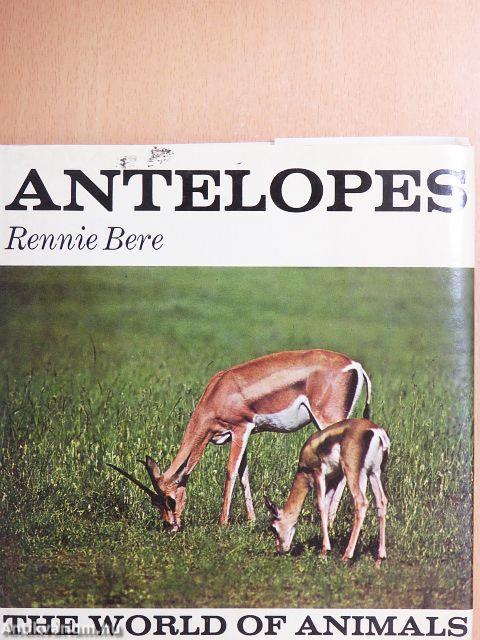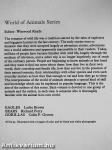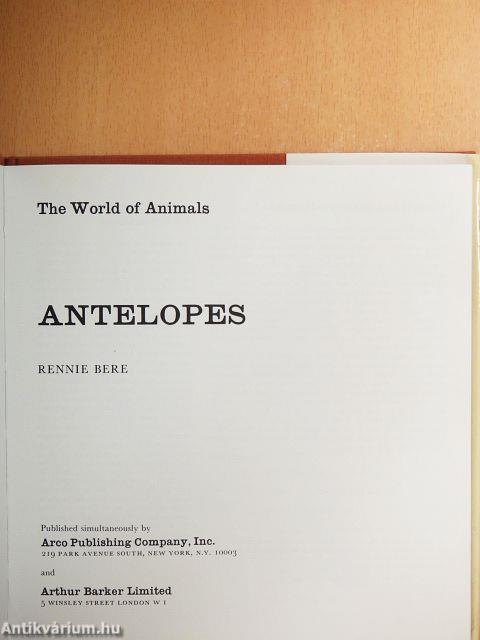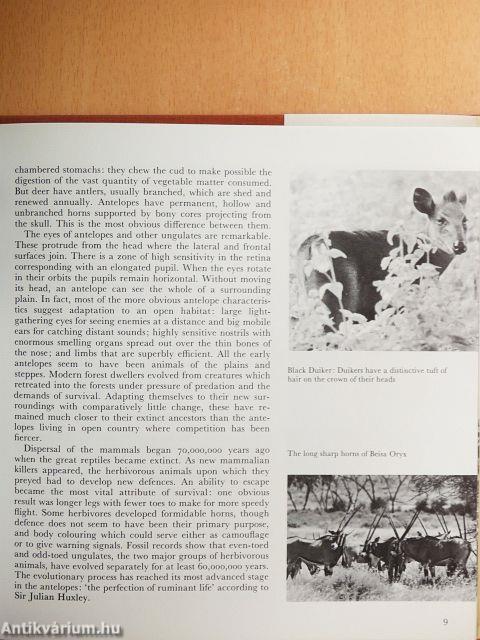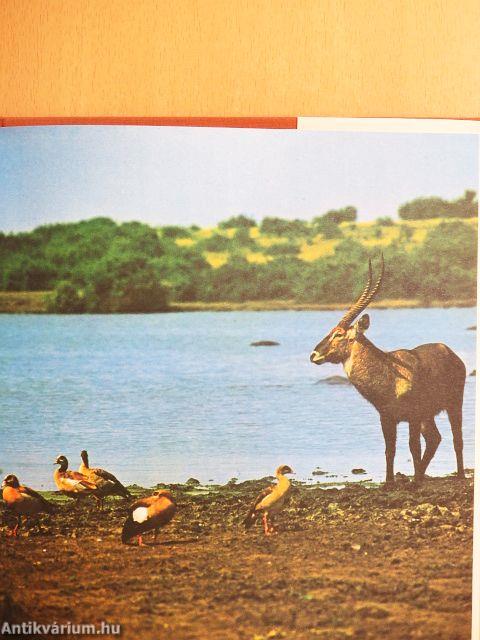1.067.053
kiadvánnyal nyújtjuk Magyarország legnagyobb antikvár könyv-kínálatát

VISSZA
A TETEJÉRE
JAVASLATOKÉszre-
vételek
Antelopes
| Kiadó: | Arco Publishing Company, Inc.-Arthur Barker Limited |
|---|---|
| Kiadás helye: | New York-London |
| Kiadás éve: | |
| Kötés típusa: | Vászon |
| Oldalszám: | 96 oldal |
| Sorozatcím: | The World of Animals |
| Kötetszám: | |
| Nyelv: | Angol |
| Méret: | 21 cm x 20 cm |
| ISBN: | |
| Megjegyzés: | Színes és fekete-fehér fotókkal. |
naponta értesítjük a beérkező friss
kiadványokról
naponta értesítjük a beérkező friss
kiadványokról
Előszó
TovábbFülszöveg
World of Animals Series
Editor: Winwood Reade
The romance of wild life was a tradition started by the tales of explorers and big game hunters in the last century. The early stories were so fantastic that they were accepted largely as adventure stories, adventures into a world unknown and apparently inaccessible to their readers. Today, millions of people have become familiar with wild life, largely through the medium of television, and a safari trip is no longer hopelessly out of reach of the ordinary person. People are beginning to know animals at first hand and they want to find out more about them: how they live in their own world, their courtship and family life, how they survive in the presence of their natural enemies, their relationships with other species and even such everyday matters as how they find enough to eat and how they go to sleep. The interpretation of the world of animals demands a special kind of skill and knowledge which can be explained in popular... Tovább
Fülszöveg
World of Animals Series
Editor: Winwood Reade
The romance of wild life was a tradition started by the tales of explorers and big game hunters in the last century. The early stories were so fantastic that they were accepted largely as adventure stories, adventures into a world unknown and apparently inaccessible to their readers. Today, millions of people have become familiar with wild life, largely through the medium of television, and a safari trip is no longer hopelessly out of reach of the ordinary person. People are beginning to know animals at first hand and they want to find out more about them: how they live in their own world, their courtship and family life, how they survive in the presence of their natural enemies, their relationships with other species and even such everyday matters as how they find enough to eat and how they go to sleep. The interpretation of the world of animals demands a special kind of skill and knowledge which can be explained in popular language. This is the aim of the authors of this series. Each volvime is devoted to one group of animals and the author, in each case, is someone who is thoroughly familiar with the animal in its own world.
EAGLES Leslie Brown BEARS Richard Perry GORILLAS Colin P. Groves
All $3-95. Illustrated with 16 pages of color and 60 black and white photographs
The word "Antelope" was first used for the graceful Indian blackbuck. It now covers one of the world's largest and most diverse groups of animals. Antelopes, of which eighty-five species are recognized, vary in size from the giant eland, as big as a horse, to the tiny dikdiks and the royal antelope which are no larger than rabbits. The group includes the impala, the superbly elegant gazelles, as well as the wildebeest and hartebeest of the African plains. Antelopes occur in every habitat and throughout the continent of Africa. They are widely distributed on the central Asian steppes.
Some antelopes stay alone or in pairs; others run together in great herds. Their habits and behavior vary as much as their appearance, yet many characteristics are common to the entire group. What purpose is served by the antelopes' horns ? How do antelopes fight? How do they guard and care for their young, recognize each other, or escape from danger? Do antelopes defend territories ? What makes them migrate? How well are they adapted to their surroundings ?
The author answers all these questions and many more in this beautifully illustrated book filled with color and black and white photographs. He also tells of the lions, leopards, cheetahs, and wild dogs which prey upon the antelopes, and describes the way these hunt. He discusses the prospects of survival in the developing modern world and shows how it is in man's interest to assure that antelopes survive.
Printed in Great Britain Vissza



